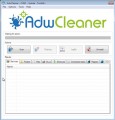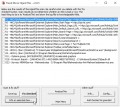The Privacyassistant.net instead of your home page is a sign of appearance of unwanted software from the browser hijacker family on your computer. It can bring a security risk to your PC system. So, do not ignore it! Of course, the Privacyassistant.net is just a web page, but the infection uses it to replace your home page, newtab page and search provider by default, without your permission and desire to see it. The Privacyassistant.net as your start page can be just the beginning, because your personal computer is infected by harmful software, that in the future may increase the amount of problems with the Chrome, Internet Explorer, Firefox and Edge. Its appearance will prevent you normally browse the Internet, and more, can lead to crash the web-browser.
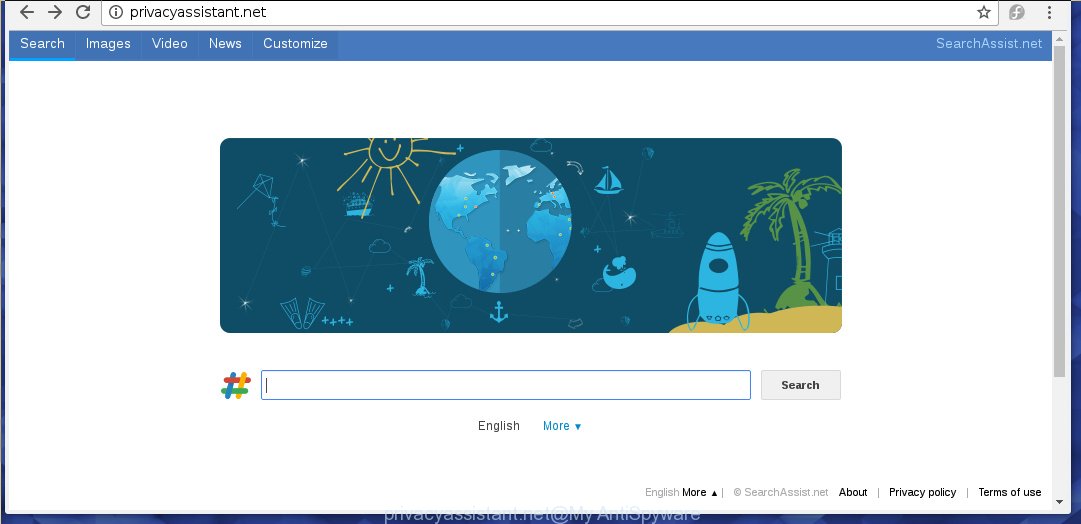
http://privacyassistant.net/
A malicious software which changes settings of web-browsers on Privacyassistant.net startpage usually affects only Firefox, Chrome, Internet Explorer and MS Edge. However, possible situations, when any other web browsers will be affected too. The Privacyassistant.net hijacker infection may alter the Target property of browser’s shortcuts, so every time you open the web-browser, instead of your startpage, you will see a completely different site.
As mentioned above, the Privacyassistant.net infection also modifies the web-browser’s search engine. So, your web browser, when searching something, will show a hodgepodge of advertisements, links to unwanted and add web-sites and search results of a big search engines such as Google or Bing. As a result, actual use of a browser’s search becomes uncomfortable. Moreover, it may also lead to slowing or even freeze your web browser.
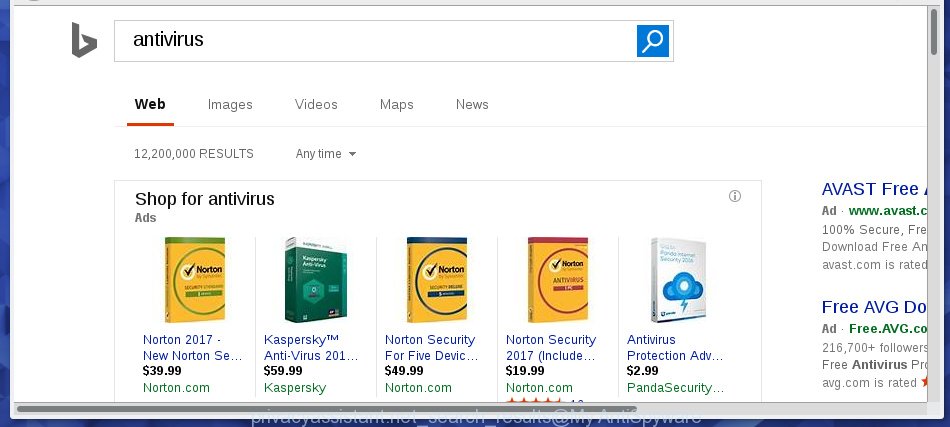
Often, the computer that has been infected with Privacyassistant.net browser hijacker, will be also infected with ‘ad-supported’ software (also known as adware) that displays a huge number of various advertisements. It may be pop-ups, text links in the sites, banners where they never had. What is more, the ad supported software may replace the legitimate ads with malicious ads that will offer to download and install malware and unwanted software or visit the various dangerous and misleading web sites.
So, it is very important to free your computer as quickly as possible. The step-by-step guide, which is shown below, will help you to get rid of Privacyassistant.net startpage from the Firefox, Chrome, Internet Explorer and MS Edge and other web browsers.
How did Privacyassistant.net browser hijacker infection get on your machine
The browser hijacker usually come bundled with free programs that downloaded from the Web. Which means that you need to be proactive and carefully read the Terms of use and the License agreement properly. For the most part, the Privacyassistant.net infection will be clearly described, so take the time to carefully read all the information about the software that you downloaded and want to install on your personal computer. In the Setup wizard, you should choose the Advanced, Custom or Manual setup mode to control what components and additional programs to be installed, otherwise you run the risk of infecting your PC system with an infection such as the Privacyassistant.net hijacker.
How to manually remove Privacyassistant.net
This useful removal guide for the Privacyassistant.net redirect. The detailed procedure can be followed by anyone as it really does take you step-by-step. If you follow this process to get rid of Privacyassistant.net homepage let us know how you managed by sending us your comments please.
- Delete Privacyassistant.net associated software by using Windows Control Panel
- Get rid of Privacyassistant.net homepage from FF
- Remove Privacyassistant.net from Chrome
- Delete Privacyassistant.net startpage from Internet Explorer
- Disinfect the browser’s shortcuts to remove Privacyassistant.net
Uninstall Privacyassistant.net associated software by using Windows Control Panel
First, you should try to identify and delete the program that causes the appearance of annoying advertisements or web-browser redirect, using the ‘Uninstall a program’ which is located in the ‘Control panel’.
Windows 8, 8.1, 10
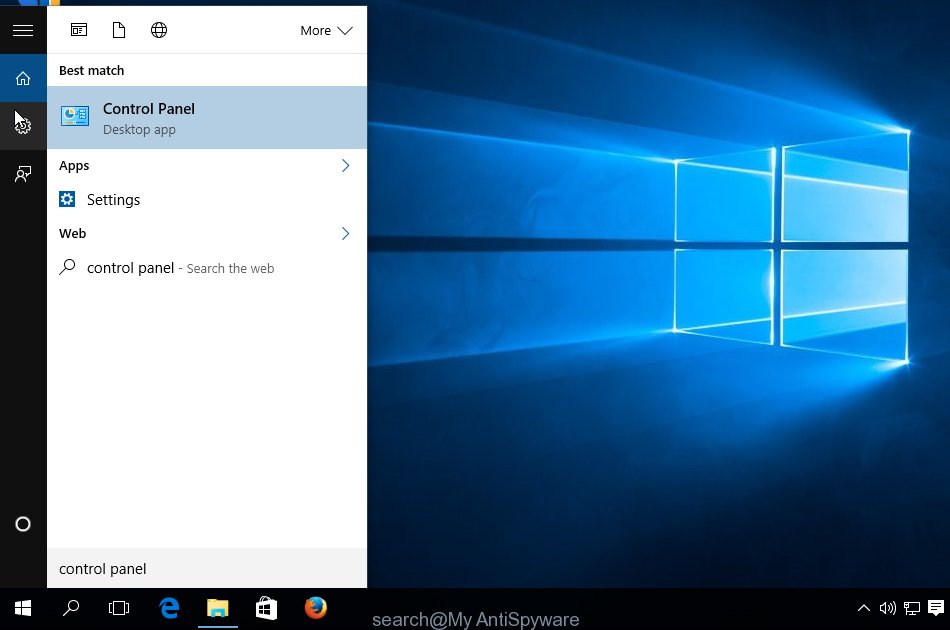 Once the ‘Control Panel’ opens, click the ‘Uninstall a program’ link under Programs category as shown below.
Once the ‘Control Panel’ opens, click the ‘Uninstall a program’ link under Programs category as shown below. 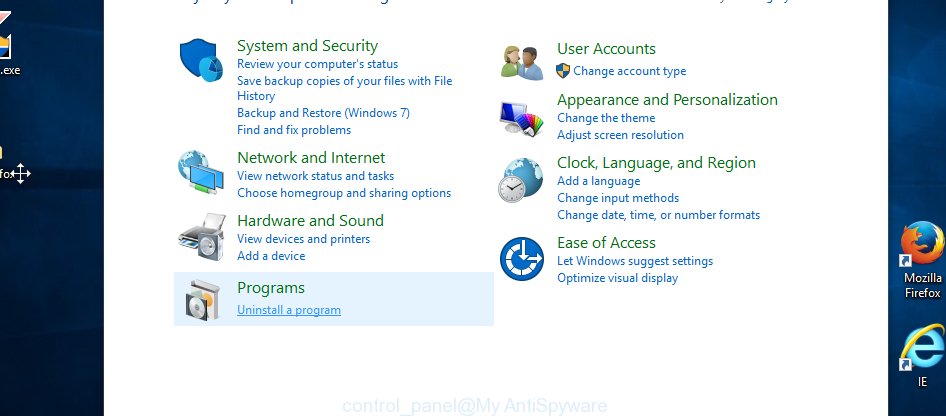 You will see the ‘Uninstall a program’ panel as shown on the screen below.
You will see the ‘Uninstall a program’ panel as shown on the screen below.  Very carefully look around the entire list of programs installed on your computer. Most likely, one or more of them are responsible for the appearance of pop-up ads and internet browser redirect to the annoying Privacyassistant.net web-site. If you have many programs installed, you can help simplify the search of dangerous software by sort the list by date of installation. Once you have found a suspicious, unwanted or unused program, right click to it, after that click ‘Uninstall’.
Very carefully look around the entire list of programs installed on your computer. Most likely, one or more of them are responsible for the appearance of pop-up ads and internet browser redirect to the annoying Privacyassistant.net web-site. If you have many programs installed, you can help simplify the search of dangerous software by sort the list by date of installation. Once you have found a suspicious, unwanted or unused program, right click to it, after that click ‘Uninstall’.
Windows XP, Vista, 7
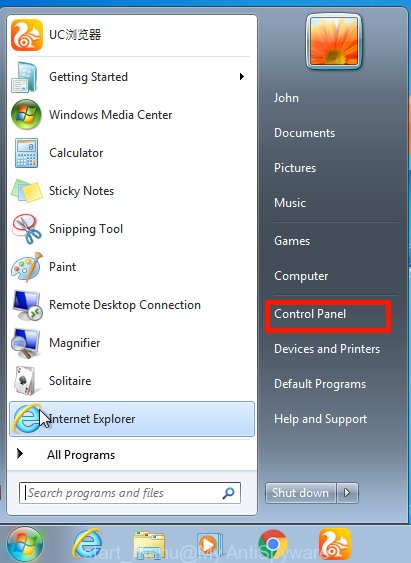 When the Windows ‘Control Panel’ opens, you need to click ‘Uninstall a program’ under ‘Programs’ as shown on the image below.
When the Windows ‘Control Panel’ opens, you need to click ‘Uninstall a program’ under ‘Programs’ as shown on the image below. 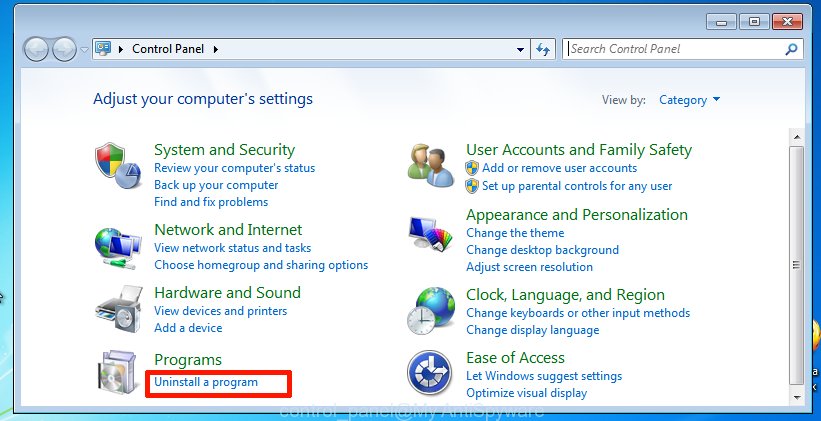 You will see a list of applications installed on your machine. We recommend to sort the list by date of installation to quickly find the software that were installed last. Most likely they responsibility for the appearance of advertisements and internet browser redirect. If you are in doubt, you can always check the program by doing a search for her name in Google, Yahoo or Bing. Once the program which you need to uninstall is found, simply press on its name, and then click ‘Uninstall’ like below.
You will see a list of applications installed on your machine. We recommend to sort the list by date of installation to quickly find the software that were installed last. Most likely they responsibility for the appearance of advertisements and internet browser redirect. If you are in doubt, you can always check the program by doing a search for her name in Google, Yahoo or Bing. Once the program which you need to uninstall is found, simply press on its name, and then click ‘Uninstall’ like below. 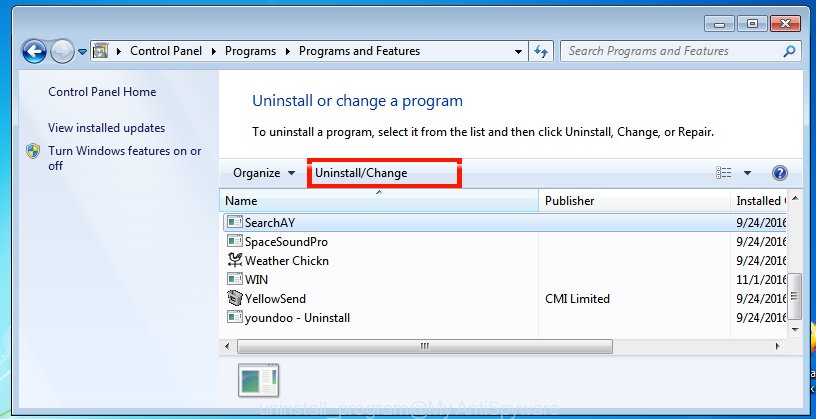
Get rid of Privacyassistant.net homepage from FF
First, start the Mozilla Firefox. Next, click the button in the form of three horizontal stripes (![]() ). It will open the drop-down menu. Next, click the Help button (
). It will open the drop-down menu. Next, click the Help button (![]() ).
).

In the Help menu click the “Troubleshooting Information”. In the upper-right corner of the “Troubleshooting Information” page click on “Refresh Firefox” button as on the image below.

Confirm your action, press the “Refresh Firefox”.
Remove Privacyassistant.net from Chrome
Reset Chrome settings is a easy way to remove the browser hijacker, dangerous and ‘ad-supported’ extensions, as well as to restore the browser’s home page, newtab page and search provider by default that have been changed by Privacyassistant.net browser hijacker.

- First launch the Google Chrome and click Menu button (small button in the form of three horizontal stripes).
- It will open the Google Chrome main menu. Select “Settings” option.
- You will see the Google Chrome’s settings page. Scroll down and press “Show advanced settings” link.
- Scroll down again and click the “Reset settings” button.
- The Chrome will display the reset profile settings page as shown on the image above.
- Next click the “Reset” button.
- Once this task is finished, your web browser’s start page and search provider by default will be restored to their original defaults.
- To learn more, read the blog post How to reset Google Chrome settings to default.
Delete Privacyassistant.net startpage from Internet Explorer
First, launch the Internet Explorer. Next, click the button in the form of gear (![]() ). It will open the Tools drop-down menu, press the “Internet Options” as shown in the figure below.
). It will open the Tools drop-down menu, press the “Internet Options” as shown in the figure below.

In the “Internet Options” window click on the Advanced tab, then press the Reset button. The Internet Explorer will open the “Reset Internet Explorer settings” window as shown on the image below. Select the “Delete personal settings” check box, then press “Reset” button.

You will now need to restart your system for the changes to take effect.
Disinfect the browser’s shortcuts to remove Privacyassistant.net
Now you need to clean up the web browser shortcuts. Check that the shortcut referring to the right exe-file of the internet browser, and not on any unknown file. Right click to a desktop shortcut for your web browser. Choose the “Properties” option.
It will open the Properties window. Select the “Shortcut” tab here, after that, look at the “Target” field. The hijacker can change it. If you are seeing something similar “…exe http://{URL}” then you need to remove “http…” and leave only, depending on the web-browser you are using:
- Google Chrome: chrome.exe
- Opera: opera.exe
- Firefox: firefox.exe
- Internet Explorer: iexplore.exe
Look at the example like below.
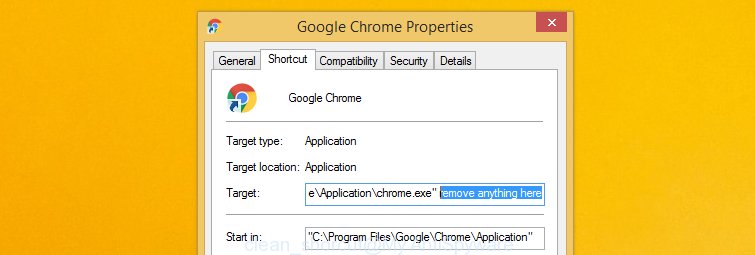
Once is finished, click the “OK” button to save the changes. Please repeat this step for web-browser shortcuts which redirects to an unwanted web pages. When you have completed, go to next step.
Delete Privacyassistant.net startpage automatically
You can remove Privacyassistant.net startpage automatically with a help of Malwarebytes Free. We recommend this free malware removal tool because it can easily remove browser hijackers, adware (also known as ‘ad-supported’ software), potentially unwanted applications and toolbars with all their components such as files, folders and registry entries.
Download Malwarebytes Free on your machine from the link below. Save it on your desktop.
327099 downloads
Author: Malwarebytes
Category: Security tools
Update: April 15, 2020
Once the downloading process is finished, close all windows on your personal computer. Further, start the file named mb3-setup. If the “User Account Control” dialog box pops up as shown on the screen below, click the “Yes” button.

It will open the “Setup wizard” which will assist you install Malwarebytes on the PC system. Follow the prompts and do not make any changes to default settings.

Once install is finished successfully, click Finish button. Then Malwarebytes will automatically start and you can see its main window like below.
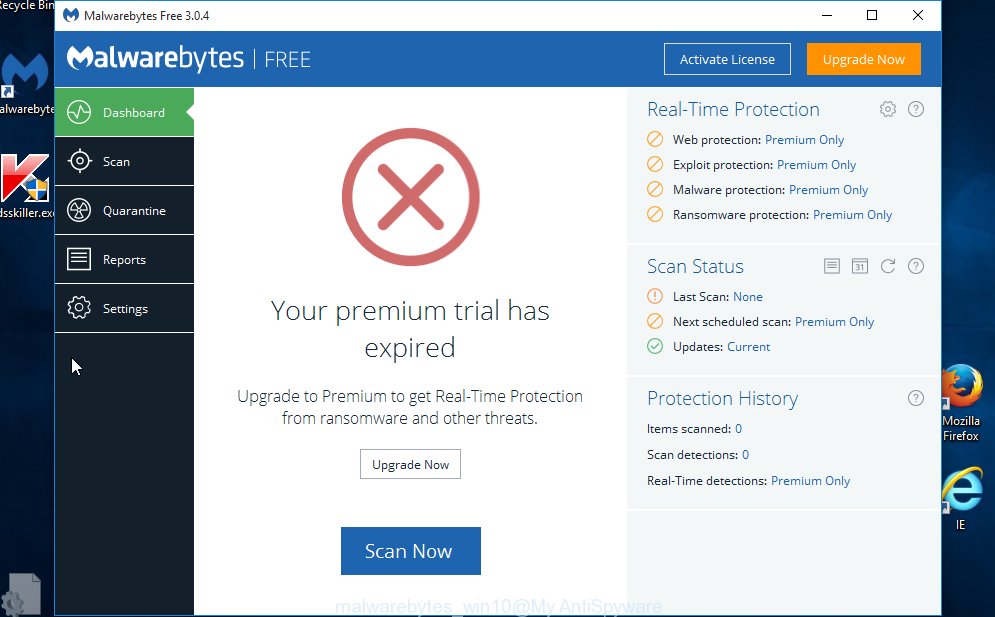
Next, click the “Scan Now” button to begin checking your machine for the infection that cause a redirect to Privacyassistant.net. When a threat is found, the number of the detected objects will change accordingly. Wait until the the scanning is done. Please be patient.
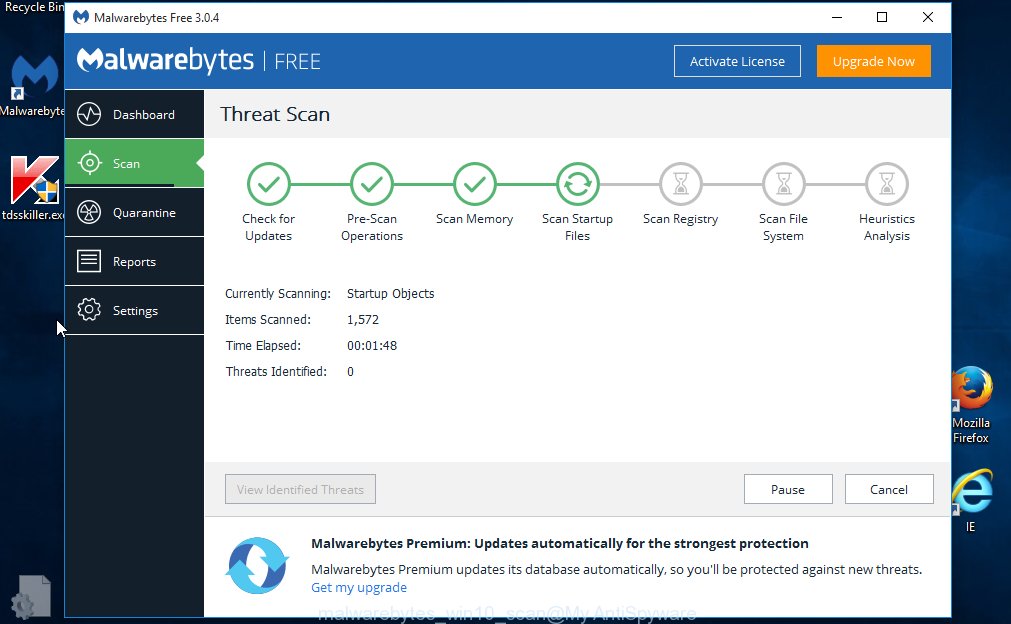
As the scanning ends, you can check all threats detected on your personal computer. Make sure all entries have “checkmark” and press “Quarantine Selected” button.
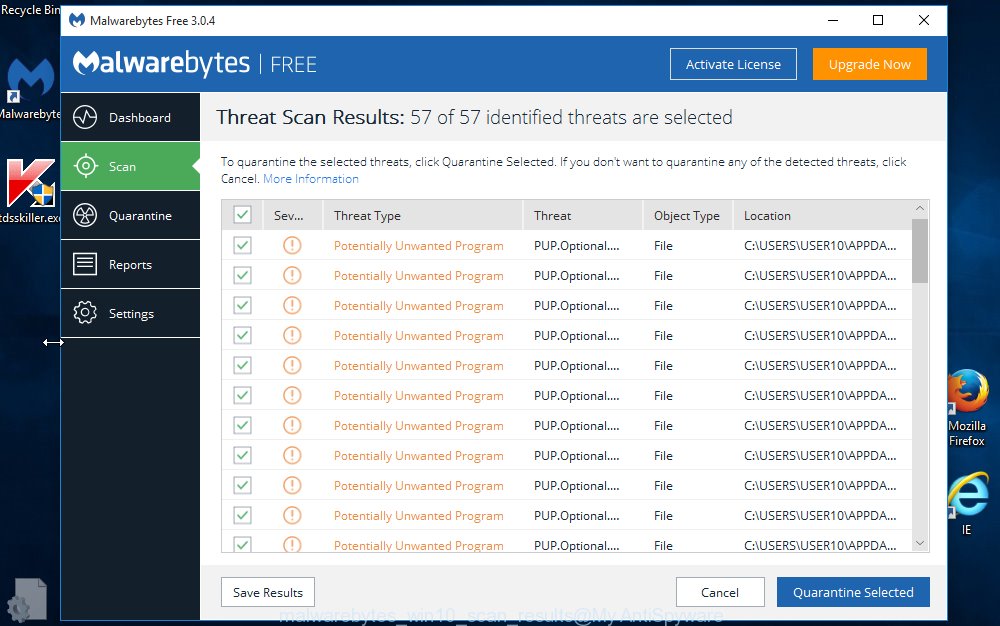
The Malwarebytes will start removing Privacyassistant.net browser hijacker and other security threats. Once disinfection is done, you may be prompted to reboot your computer. I recommend you look at the following video, which completely explains the process of using the Malwarebytes to get rid of browser hijacker, adware and other harmful programs.
Stop Privacyassistant.net search and other annoying web-sites
To increase your security and protect your system against new unwanted ads and harmful sites, you need to use an program that stops access to dangerous advertisements and pages. Moreover, the program can block the open of intrusive advertising, that also leads to faster loading of pages and reduce the consumption of web traffic.
Download AdGuard program by clicking on the following link.
26854 downloads
Version: 6.4
Author: © Adguard
Category: Security tools
Update: November 15, 2018
After the download is complete, start the downloaded file. You will see the “Setup Wizard” screen as shown on the image below.

Follow the prompts. When the install is finished, you will see a window as shown in the figure below.

You can click “Skip” to close the setup application and use the default settings, or click “Get Started” button to see an quick tutorial which will assist you get to know AdGuard better.
In most cases, the default settings are enough and you do not need to change anything. Each time, when you run your PC system, AdGuard will start automatically and block popup ads, web-sites such Privacyassistant.net, as well as other malicious or misleading web-pages. For an overview of all the features of the program, or to change its settings you can simply double-click on the AdGuard icon, that is located on your desktop.
If the problem with Privacyassistant.net redirect is still remained
If MalwareBytes Anti-malware cannot remove this hijacker infection, then we suggests to use the AdwCleaner. AdwCleaner is a free removal tool for browser hijackers, adware, PUPs, toolbars.
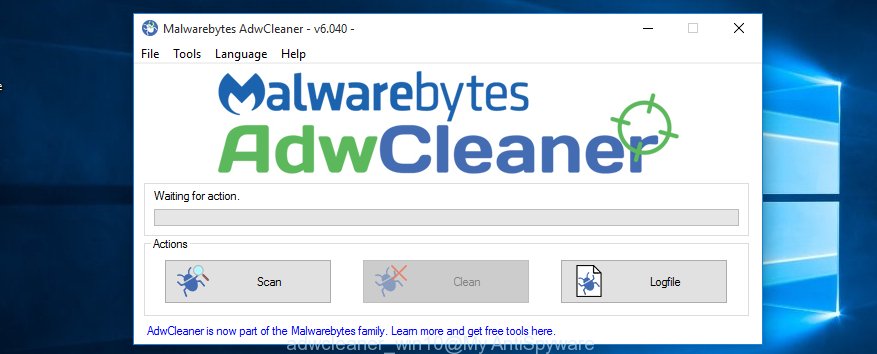
- Download AdwCleaner by clicking on the link below. AdwCleaner download
225555 downloads
Version: 8.4.1
Author: Xplode, MalwareBytes
Category: Security tools
Update: October 5, 2024
- Double press the AdwCleaner icon. Once this tool is opened, click “Scan” button to begin checking your personal computer for the Privacyassistant.net hijacker infection.
- Once the scanning is finished, the AdwCleaner will open a scan report. Review the report and then click “Clean” button. It will show a prompt, click “OK”.
These few simple steps are shown in detail in the following video guide.
Finish words
After completing the step-by-step instructions shown above, your machine should be clean from malware and browser hijackers. The Chrome, IE, Firefox and MS Edge will no longer open Privacyassistant.net unwanted start page on startup. Unfortunately, if the step-by-step instructions does not help you, then you have caught a new browser hijacker, and then the best way – ask for help.
- Download HijackThis from the link below and save it to your Desktop. HijackThis download
4910 downloads
Version: 2.0.5
Author: OpenSource
Category: Security tools
Update: November 7, 2015
- Double-click on the HijackThis icon. Next click “Do a system scan only” button.
- Once the checking is finished, the scan button will read “Save log”, press it. Save this log to your desktop.
- Create a Myantispyware account here. Once you’ve registered, check your e-mail for a confirmation link, and confirm your account. After that, login.
- Copy and paste the contents of the HijackThis log into your post. If you are posting for the first time, please start a new thread by using the “New Topic” button in the Spyware Removal forum. When posting your HJT log, try to give us some details about your problems, so we can try to help you more accurately.
- Wait for one of our trained “Security Team” or Site Administrator to provide you with knowledgeable assistance tailored to your problem with the annoying Privacyassistant.net .

